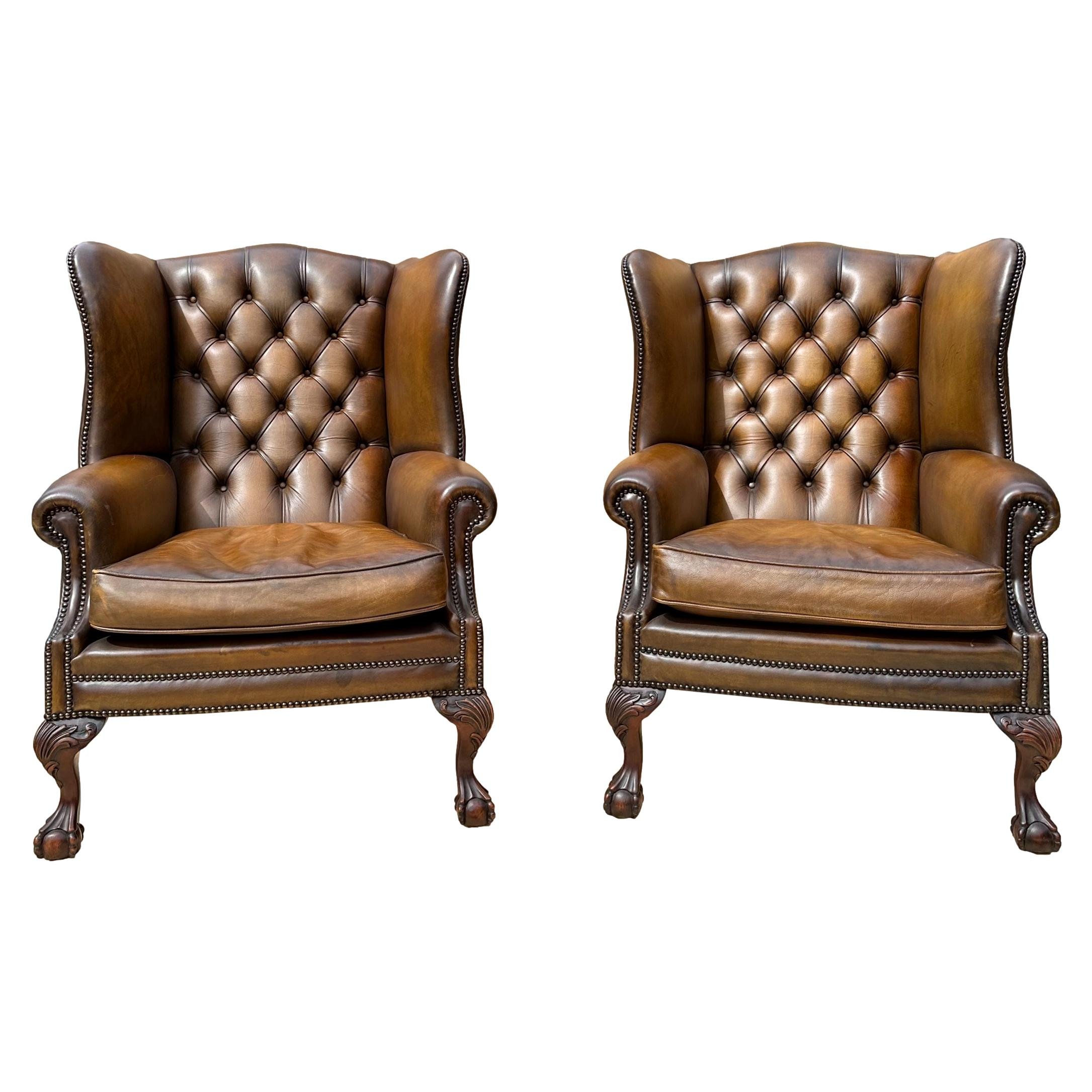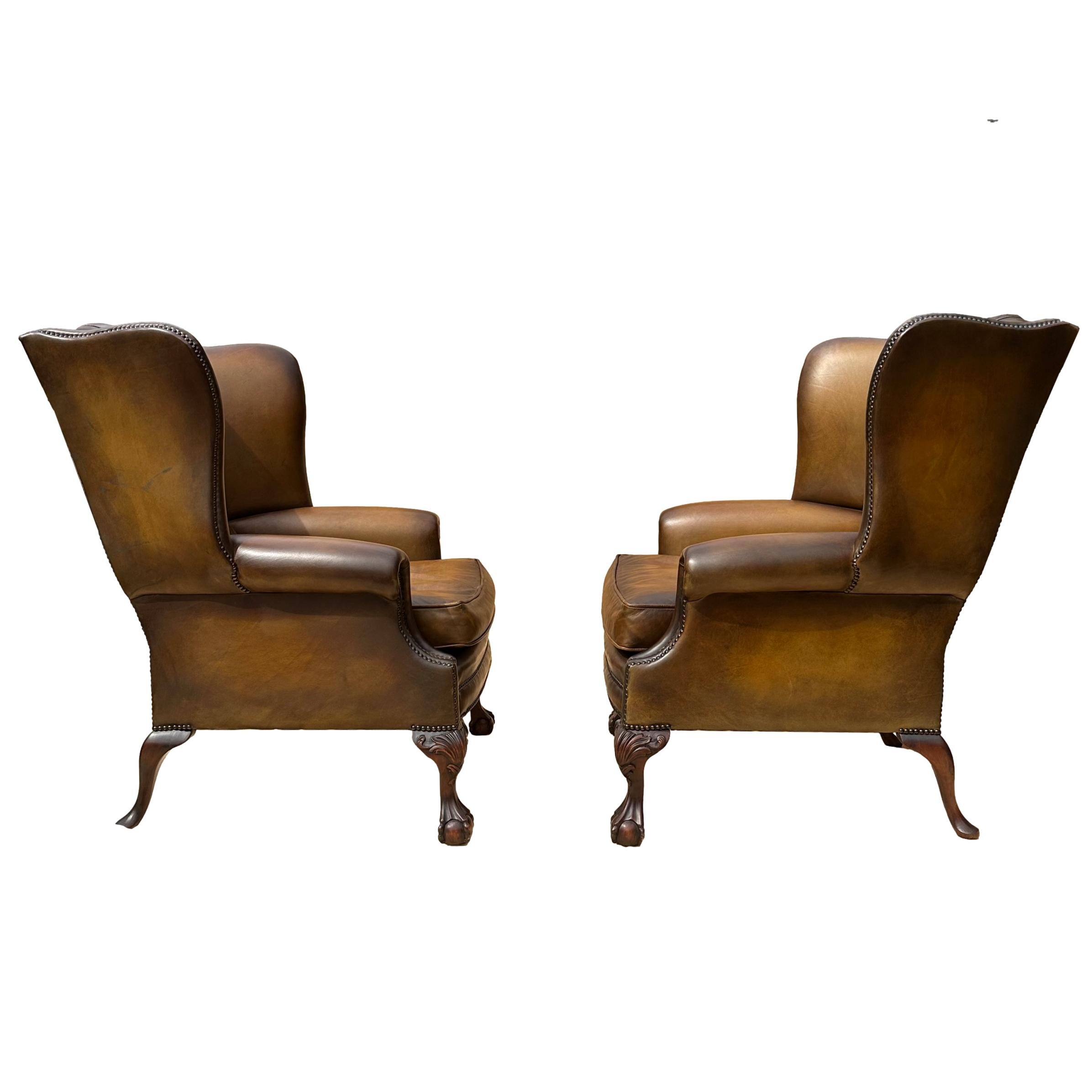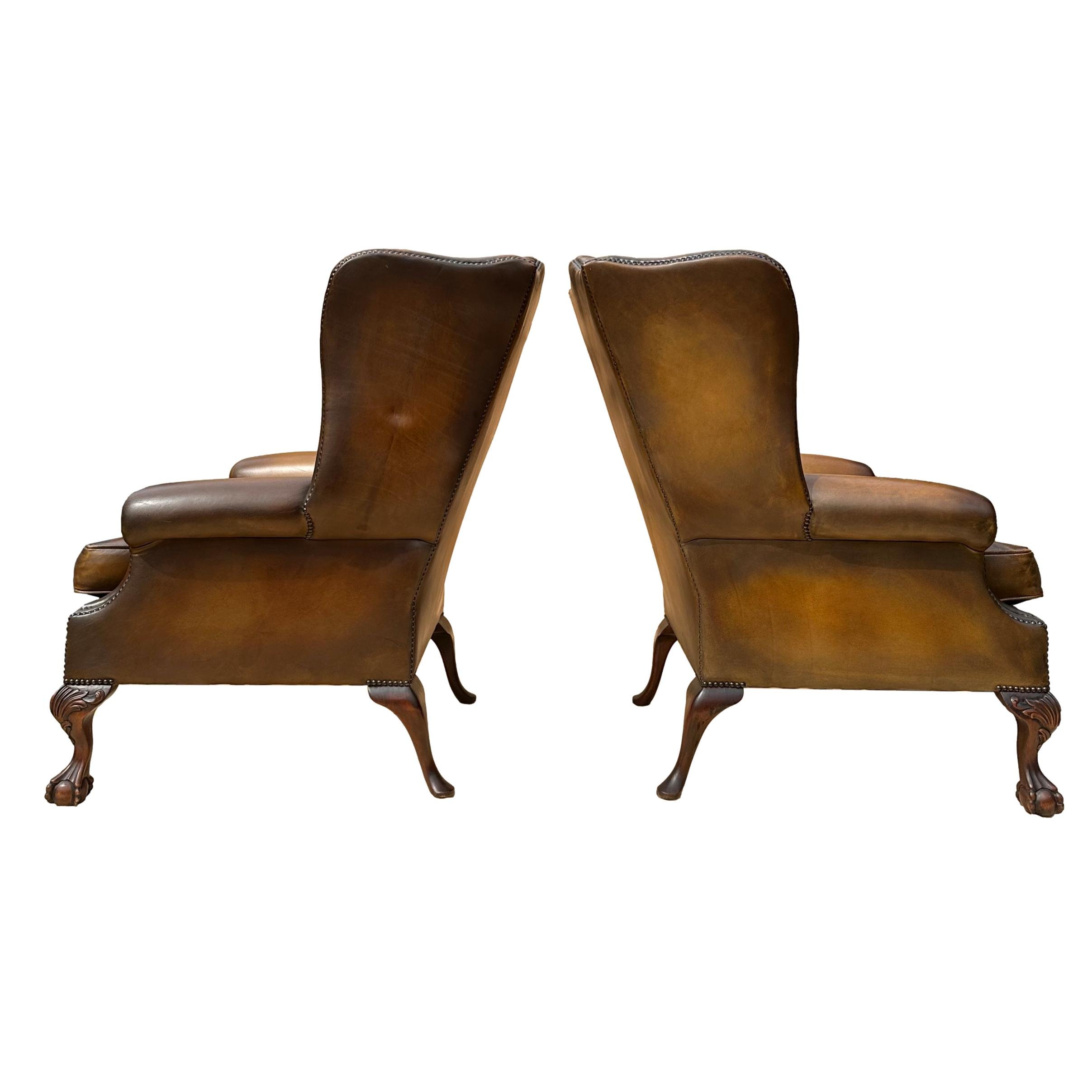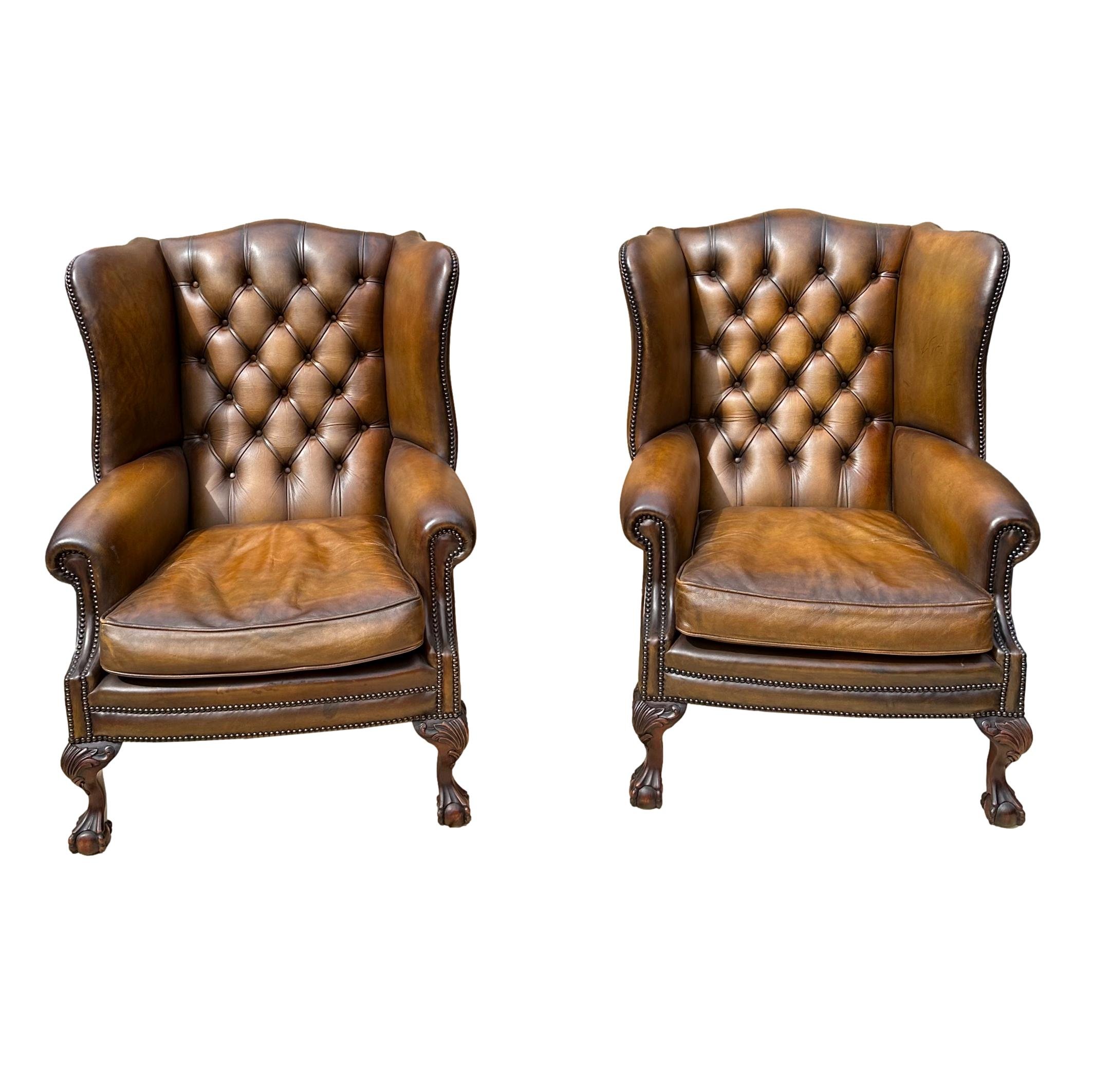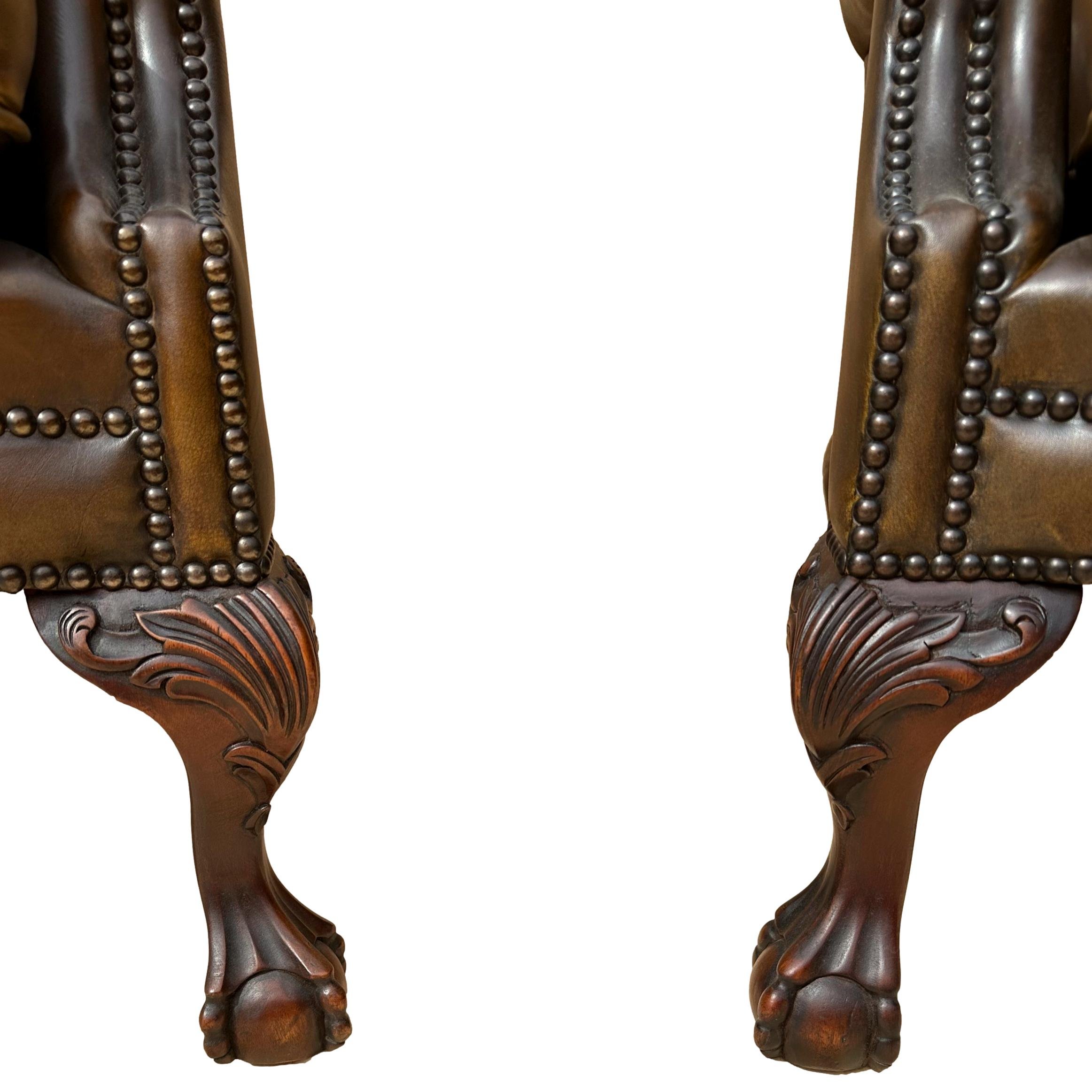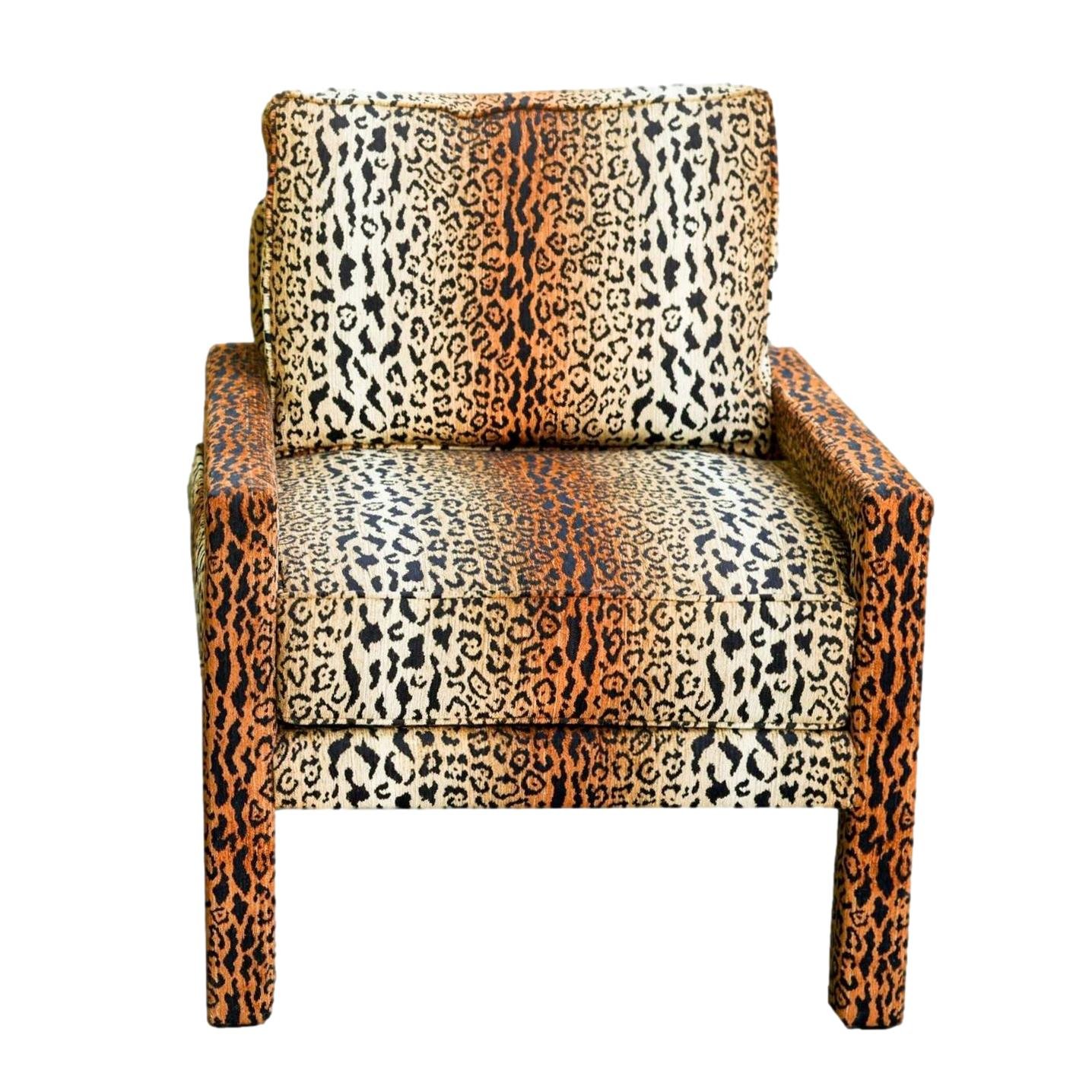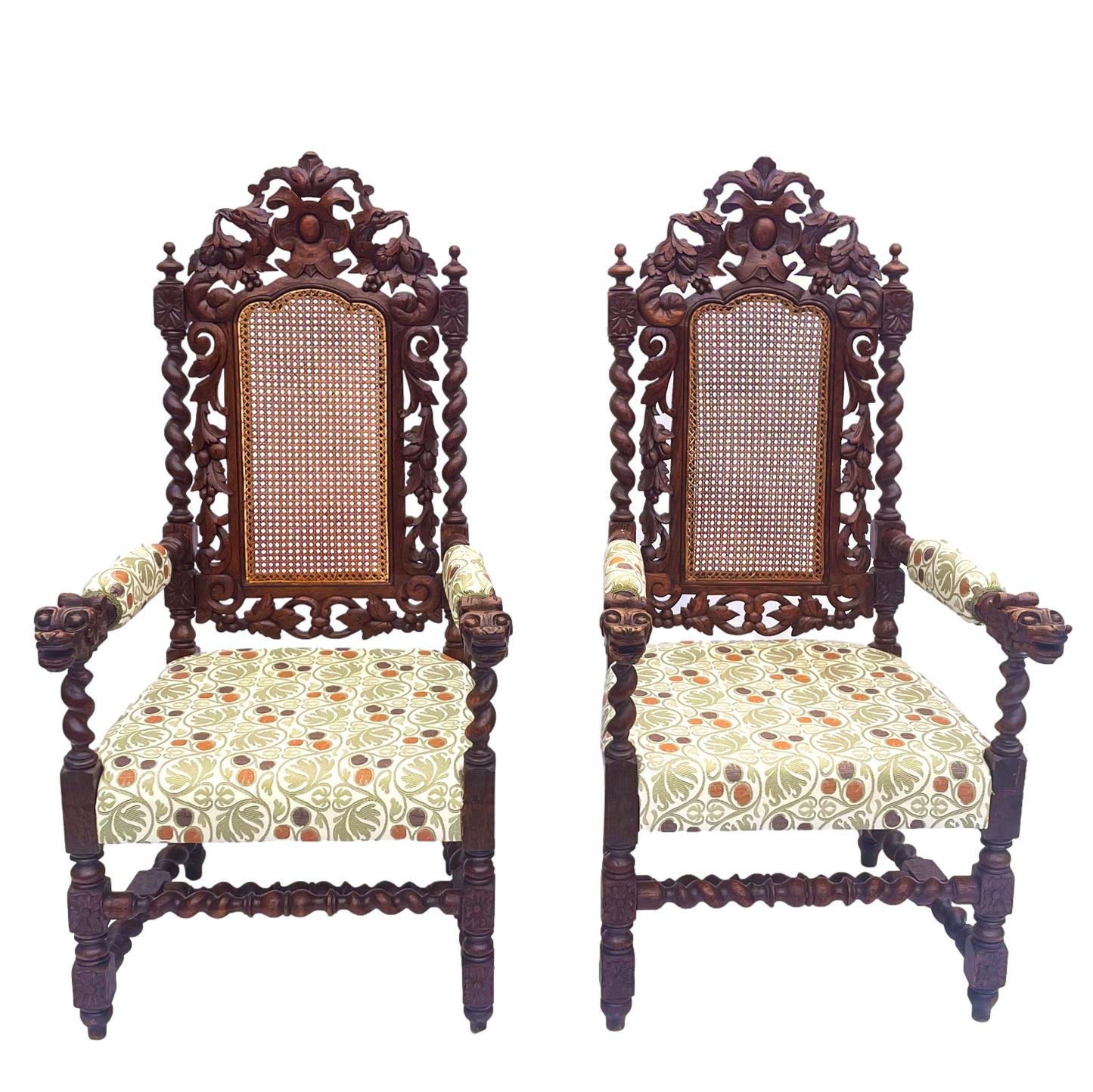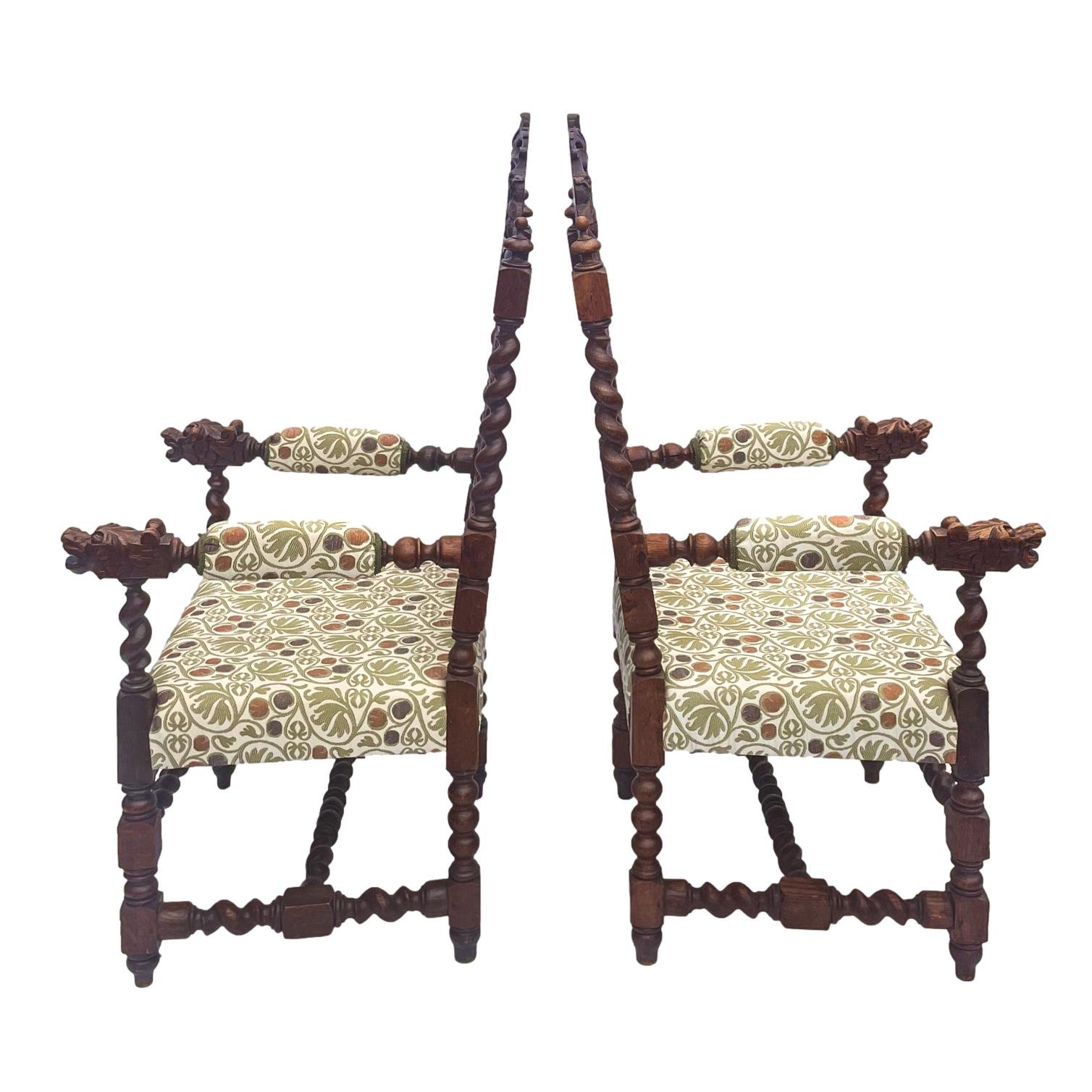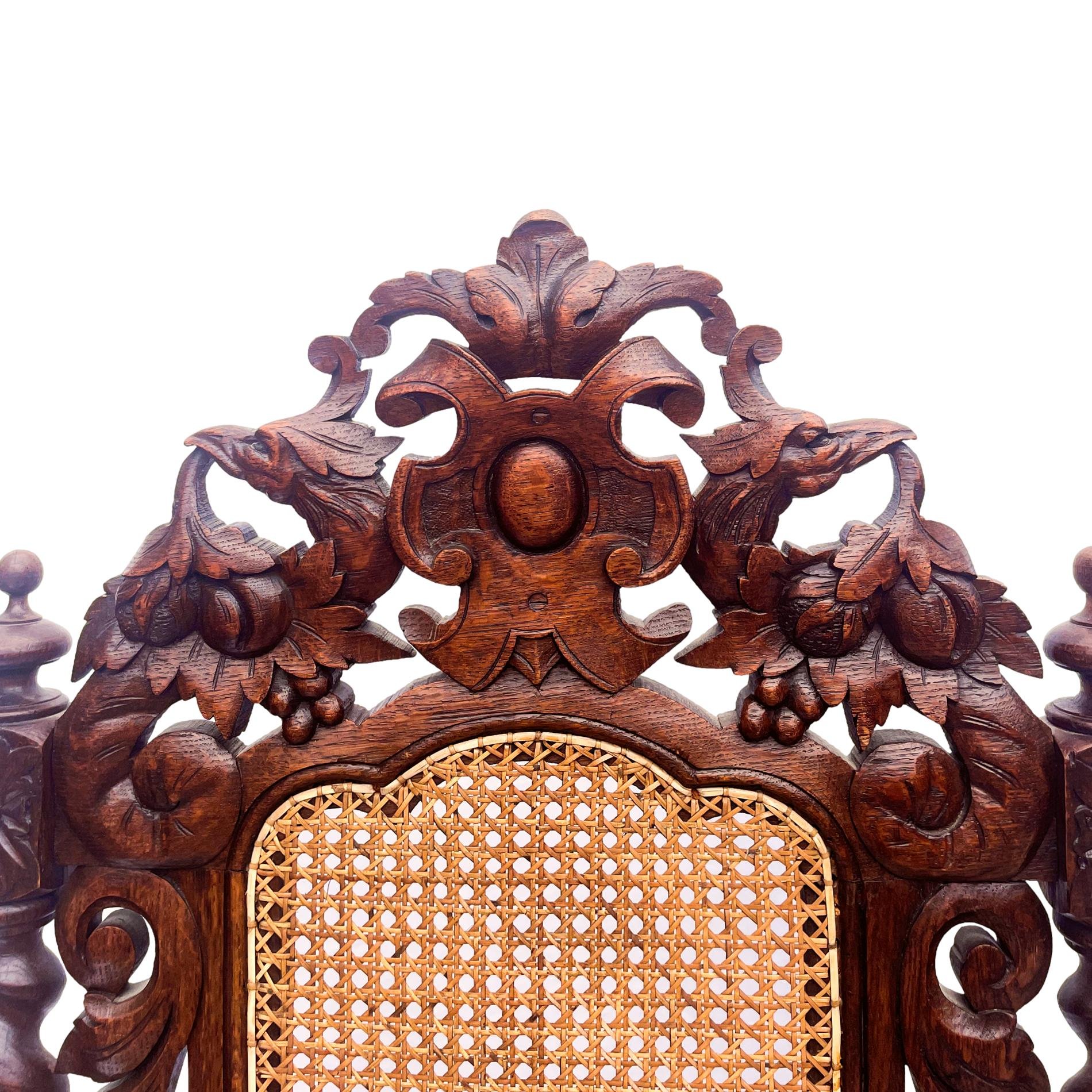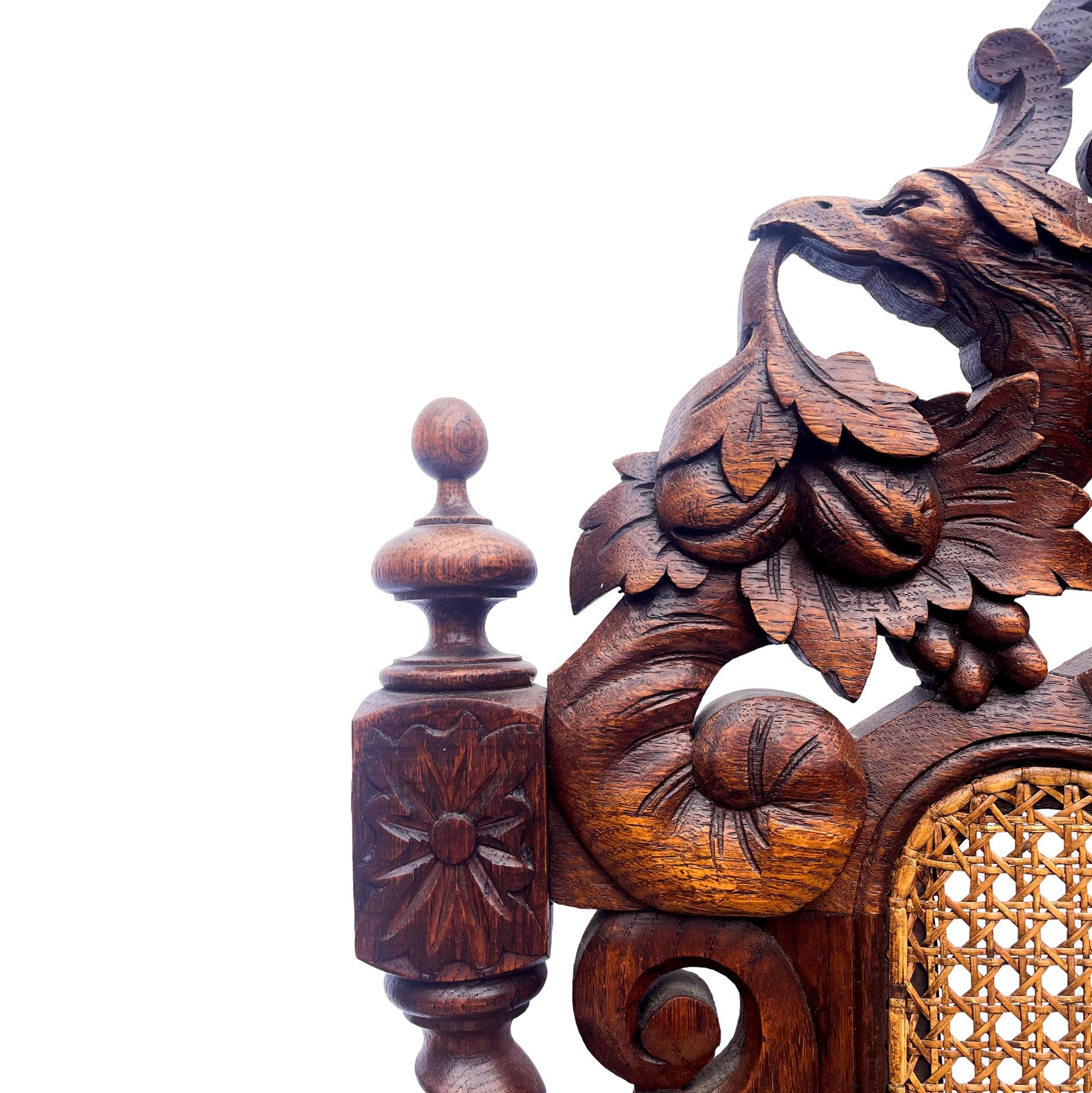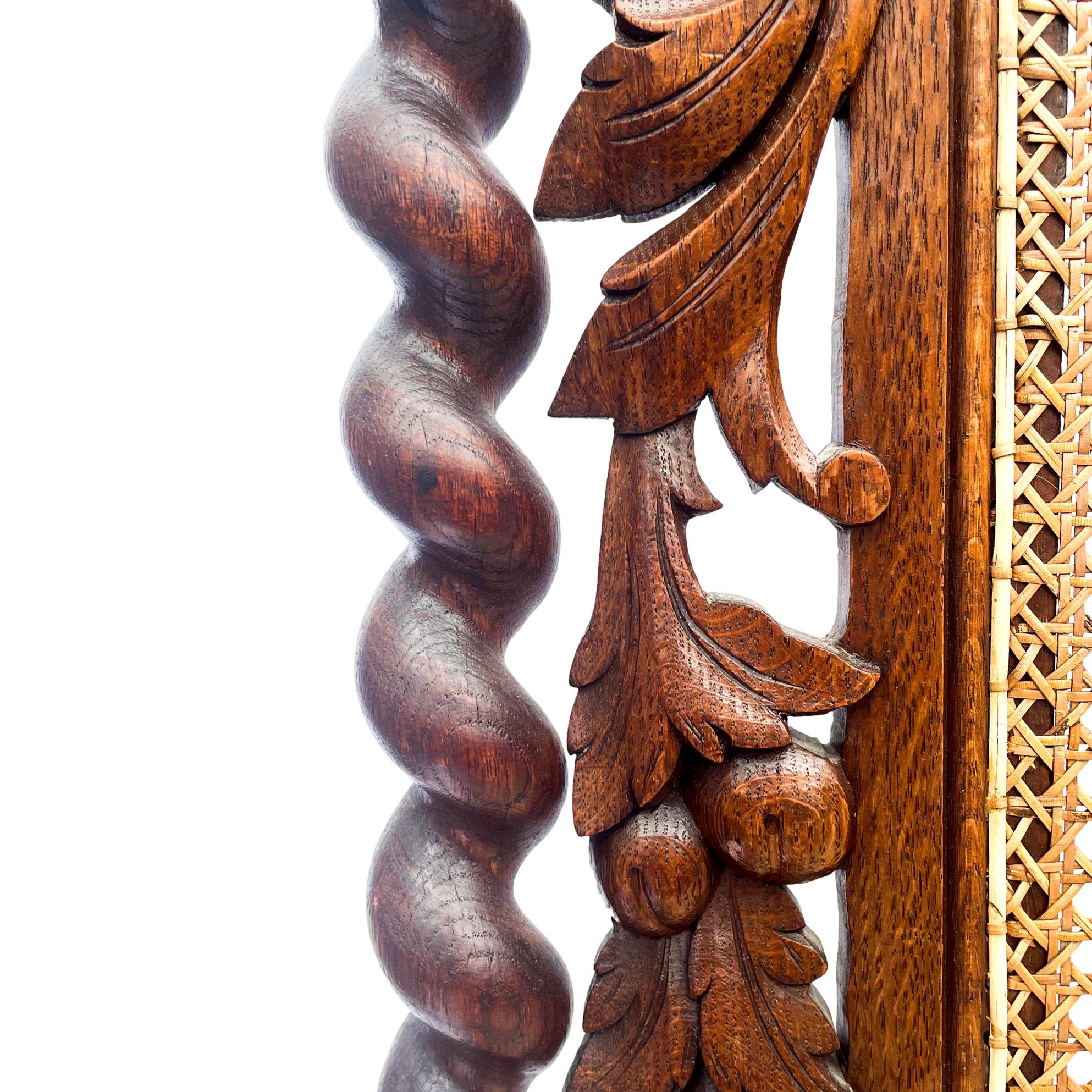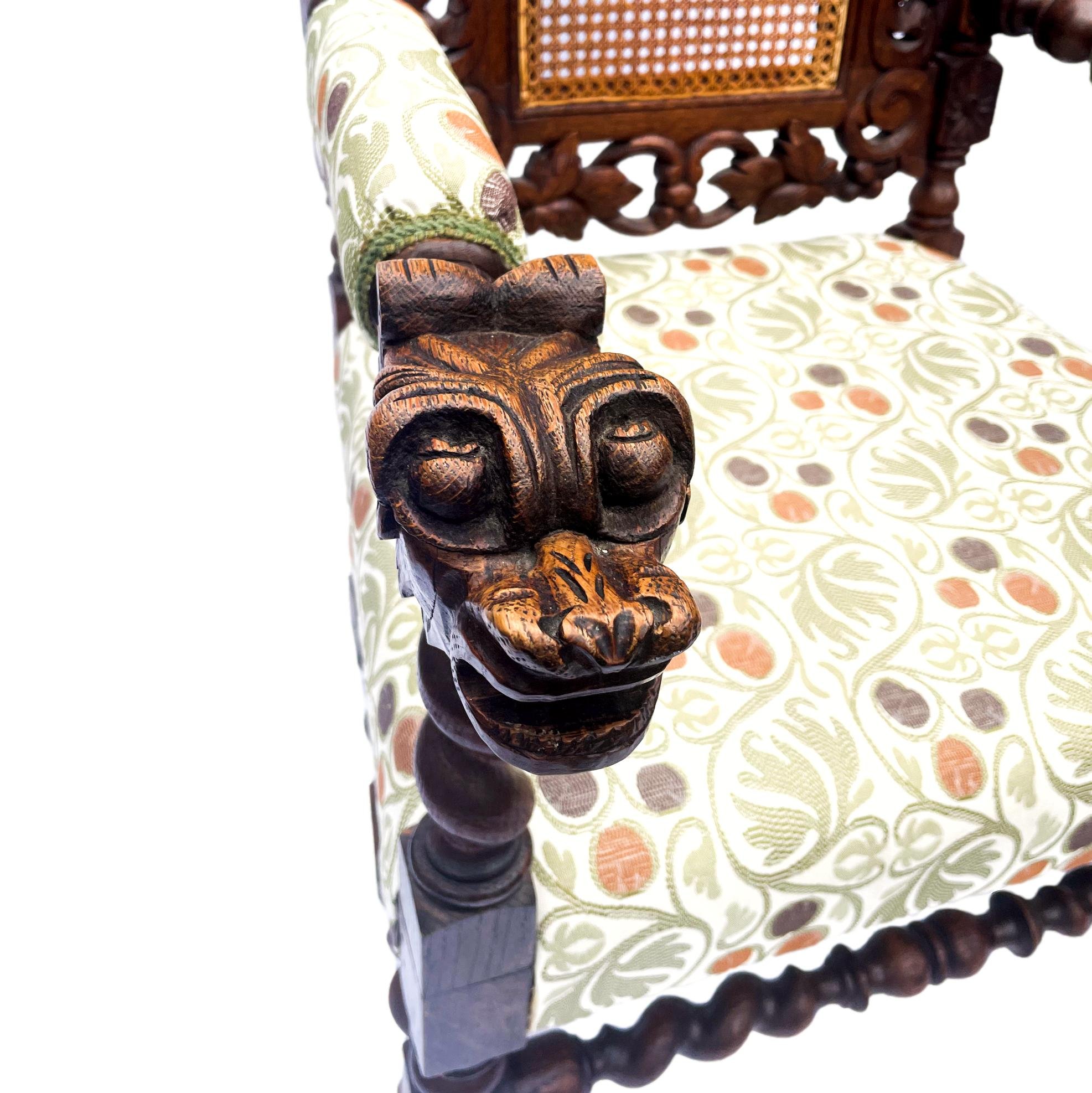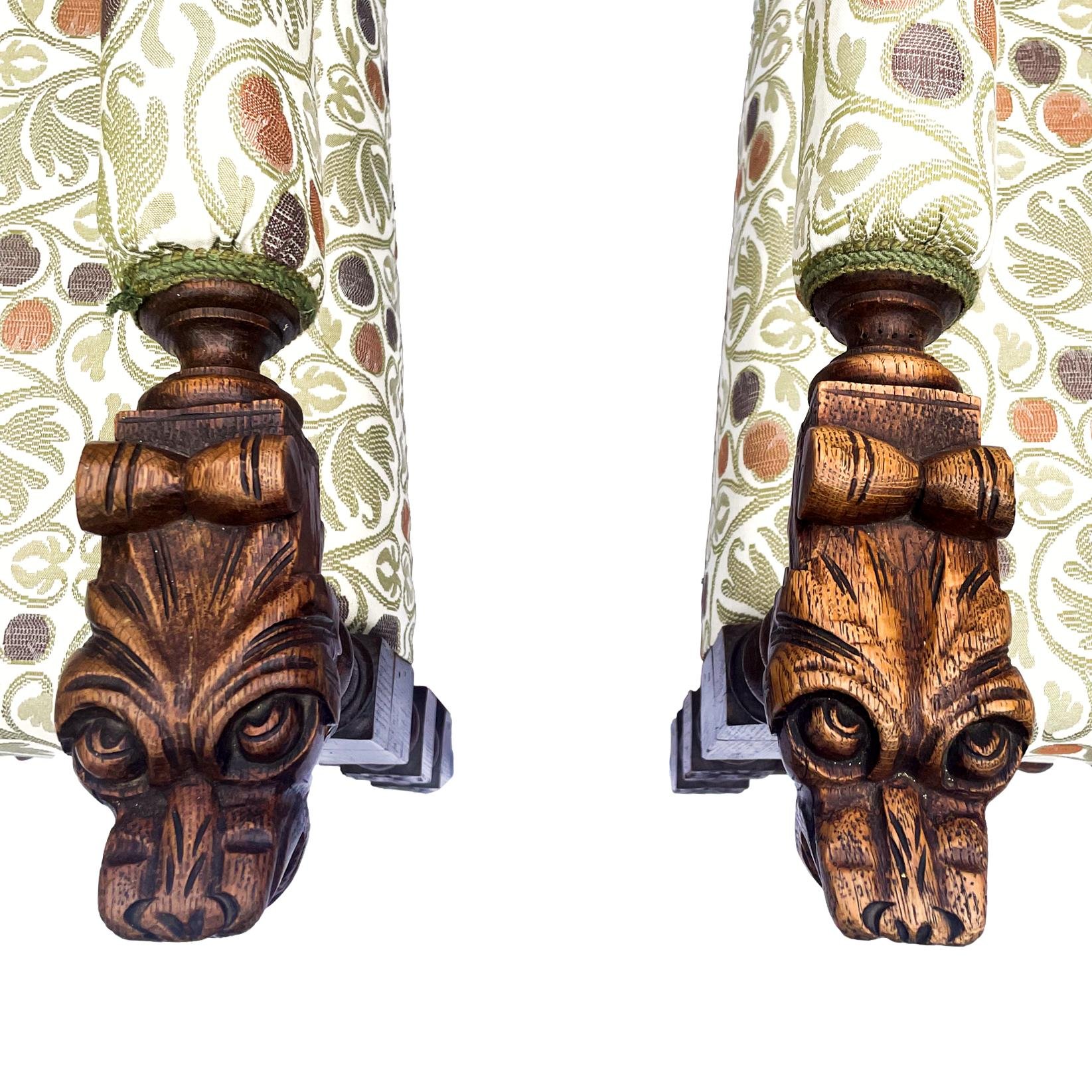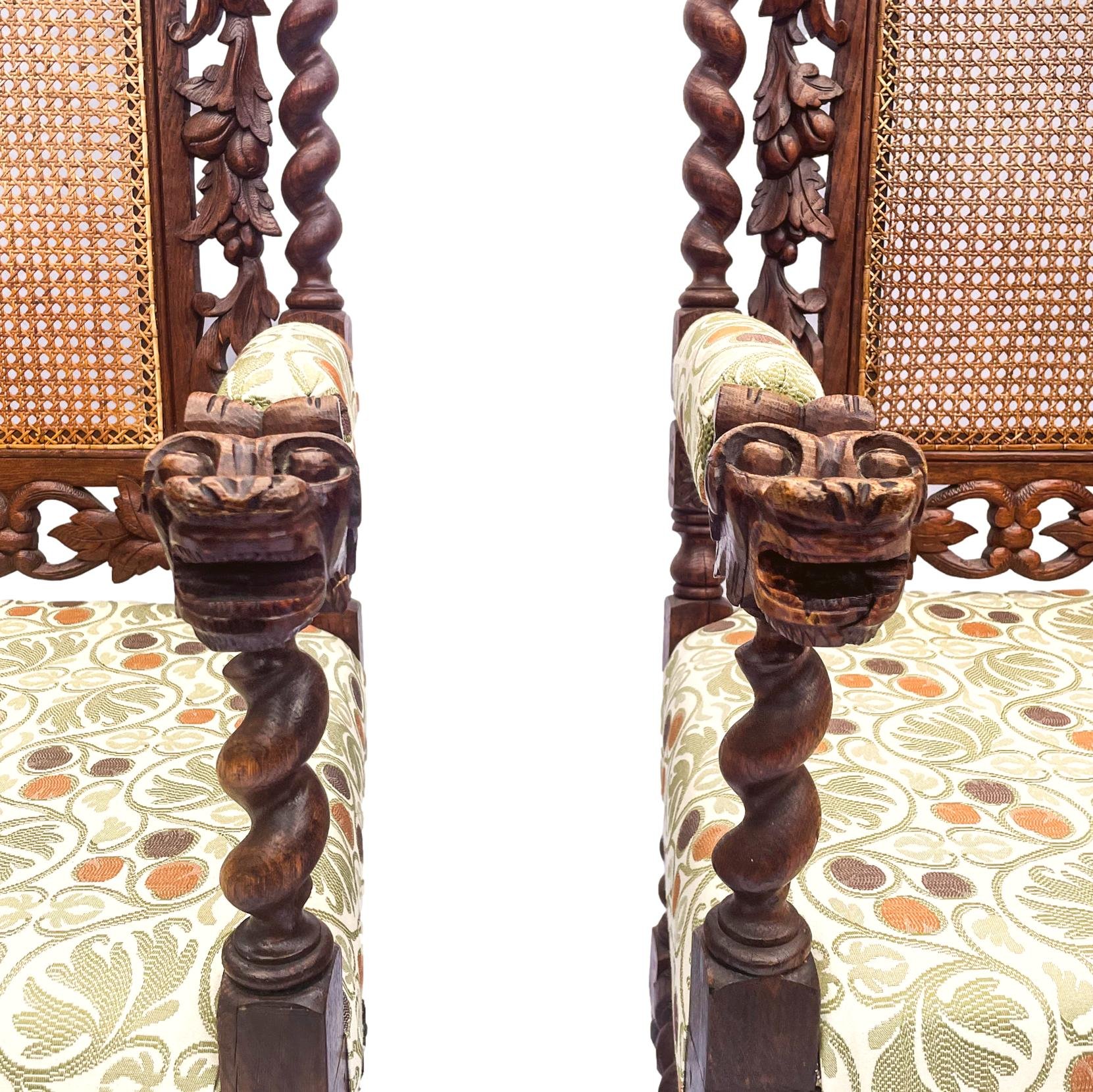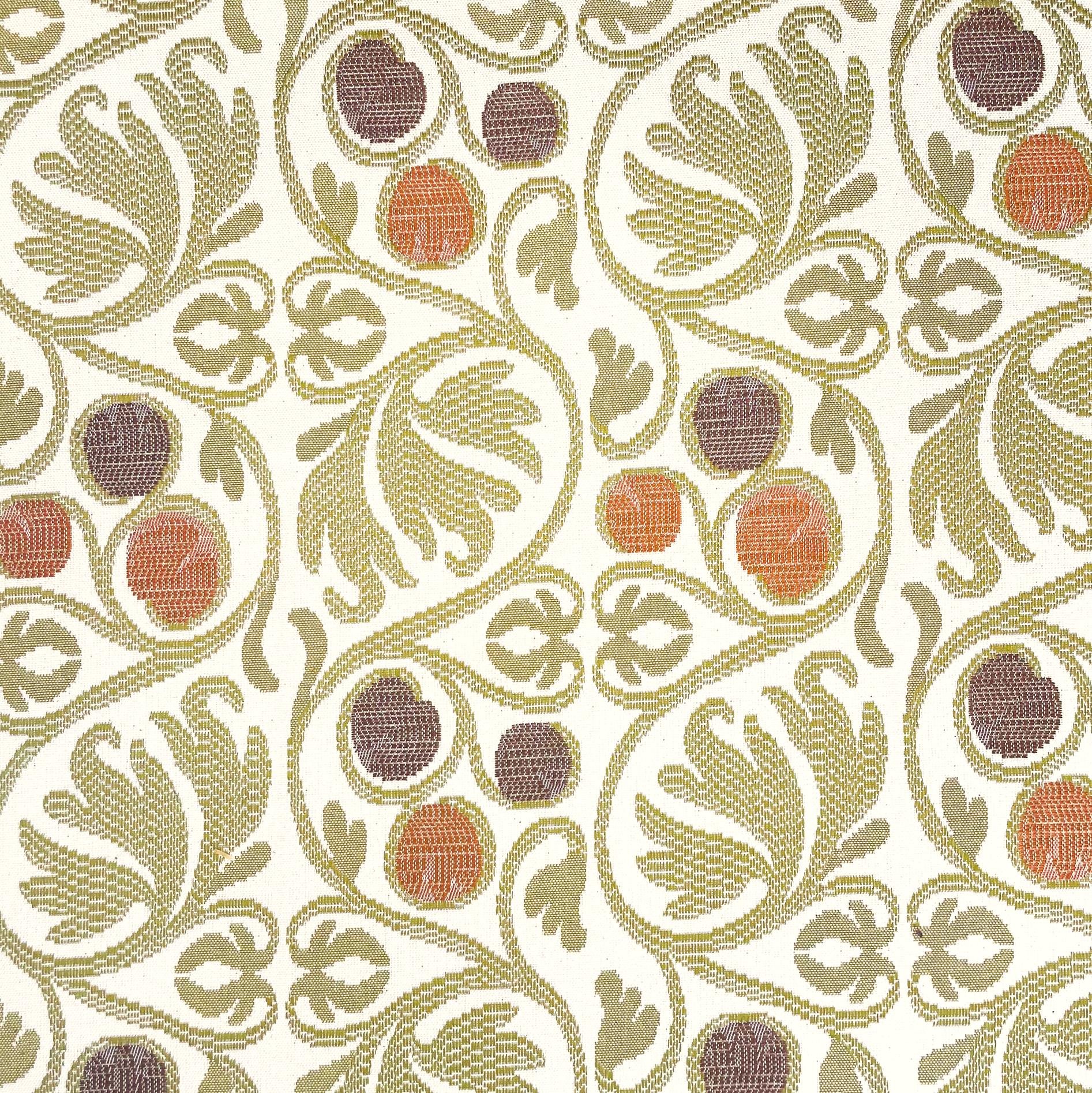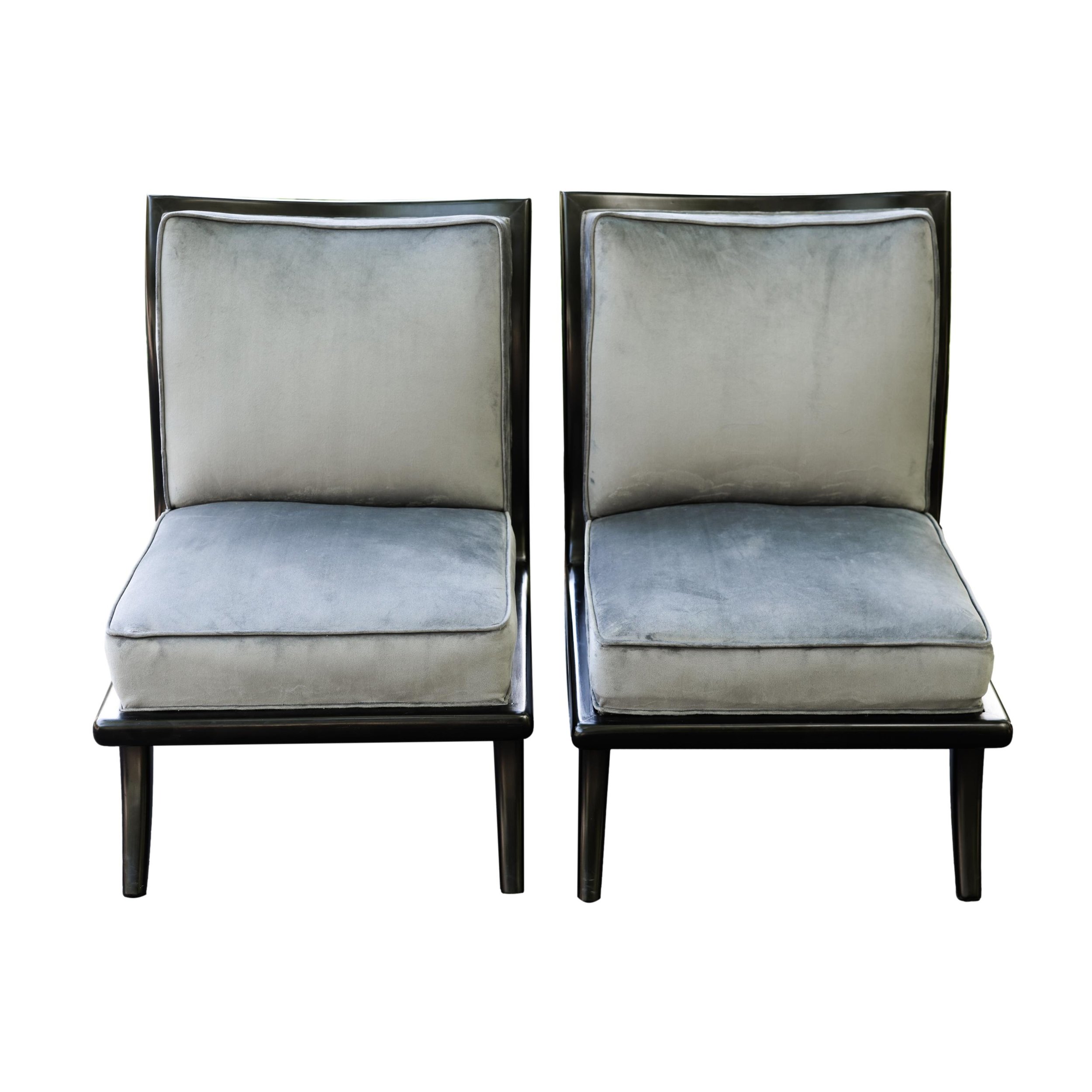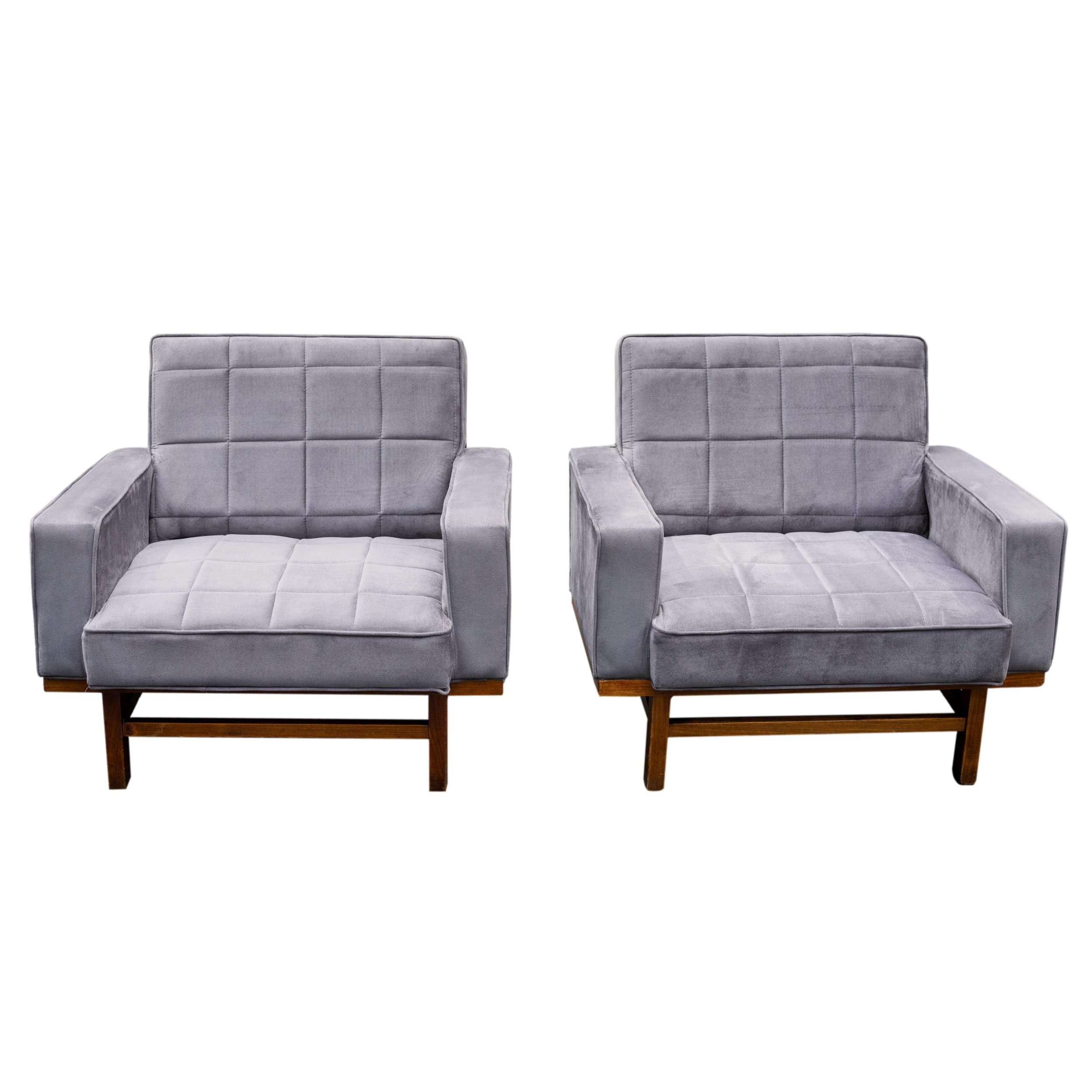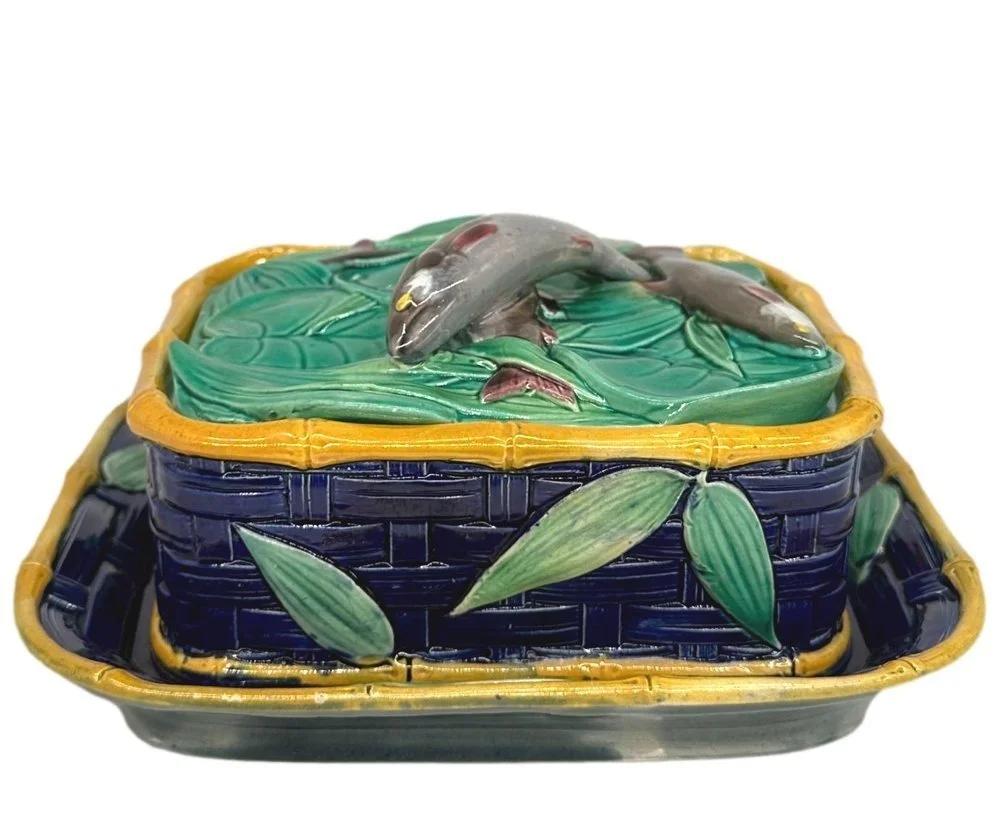 Image 1 of 10
Image 1 of 10

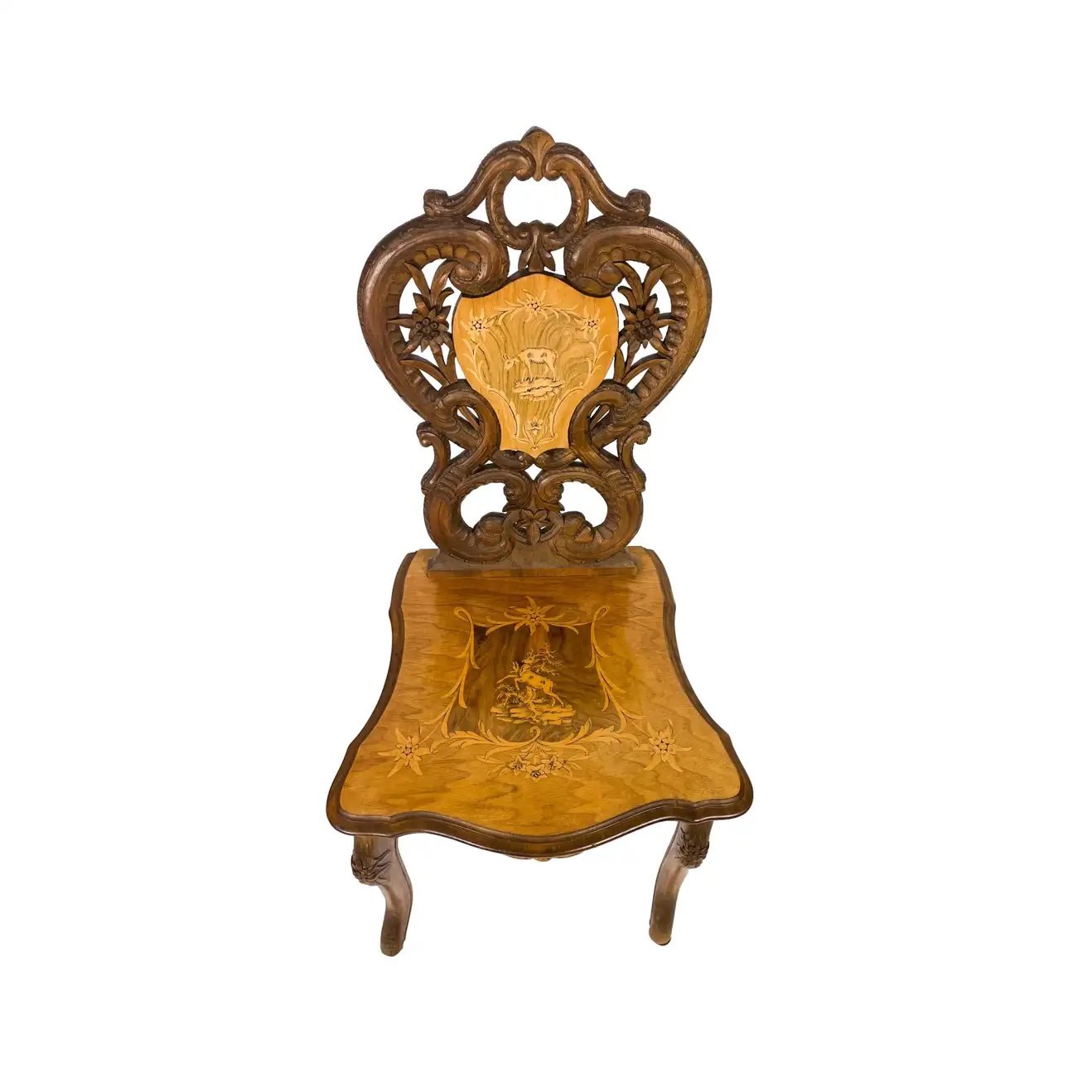 Image 2 of 10
Image 2 of 10

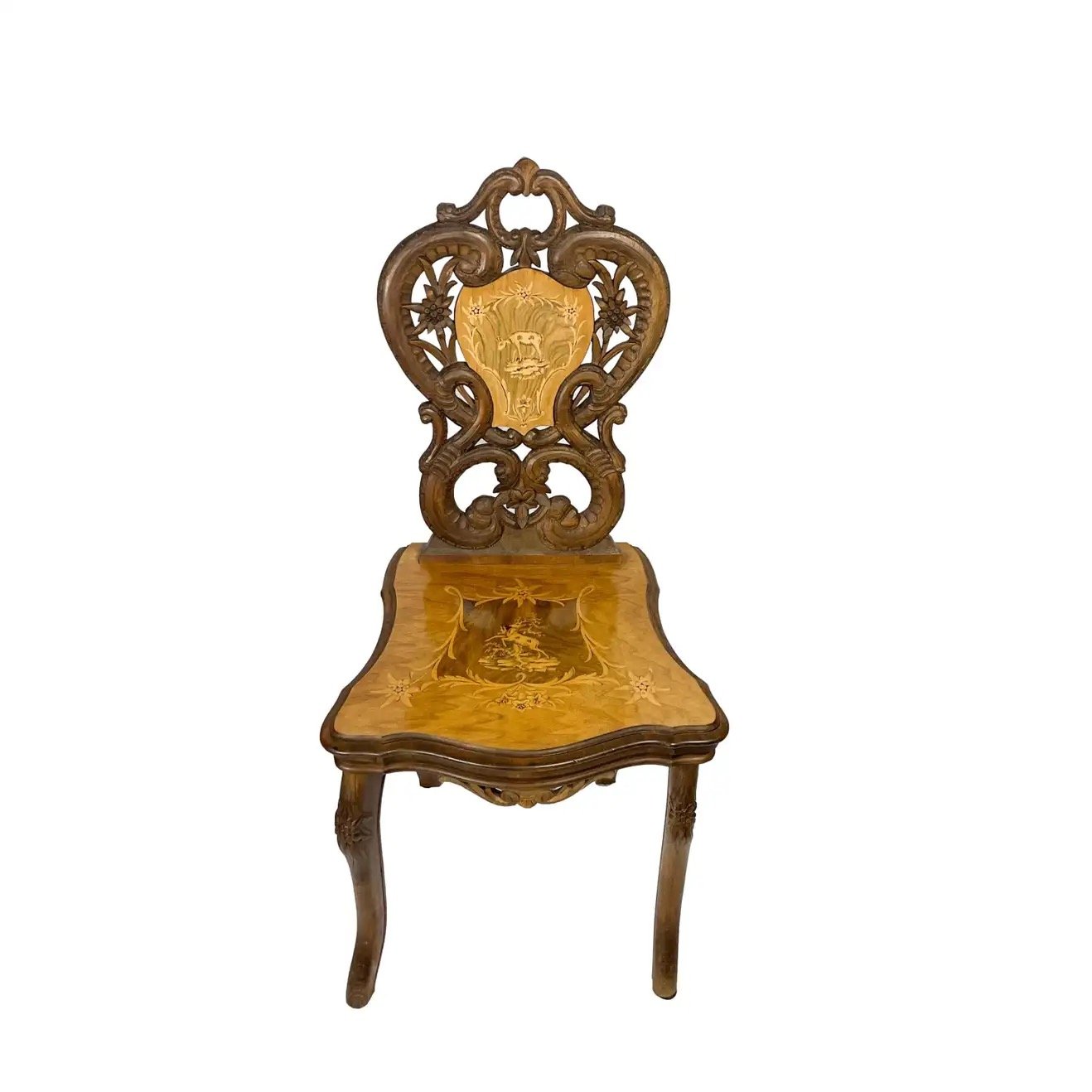 Image 3 of 10
Image 3 of 10

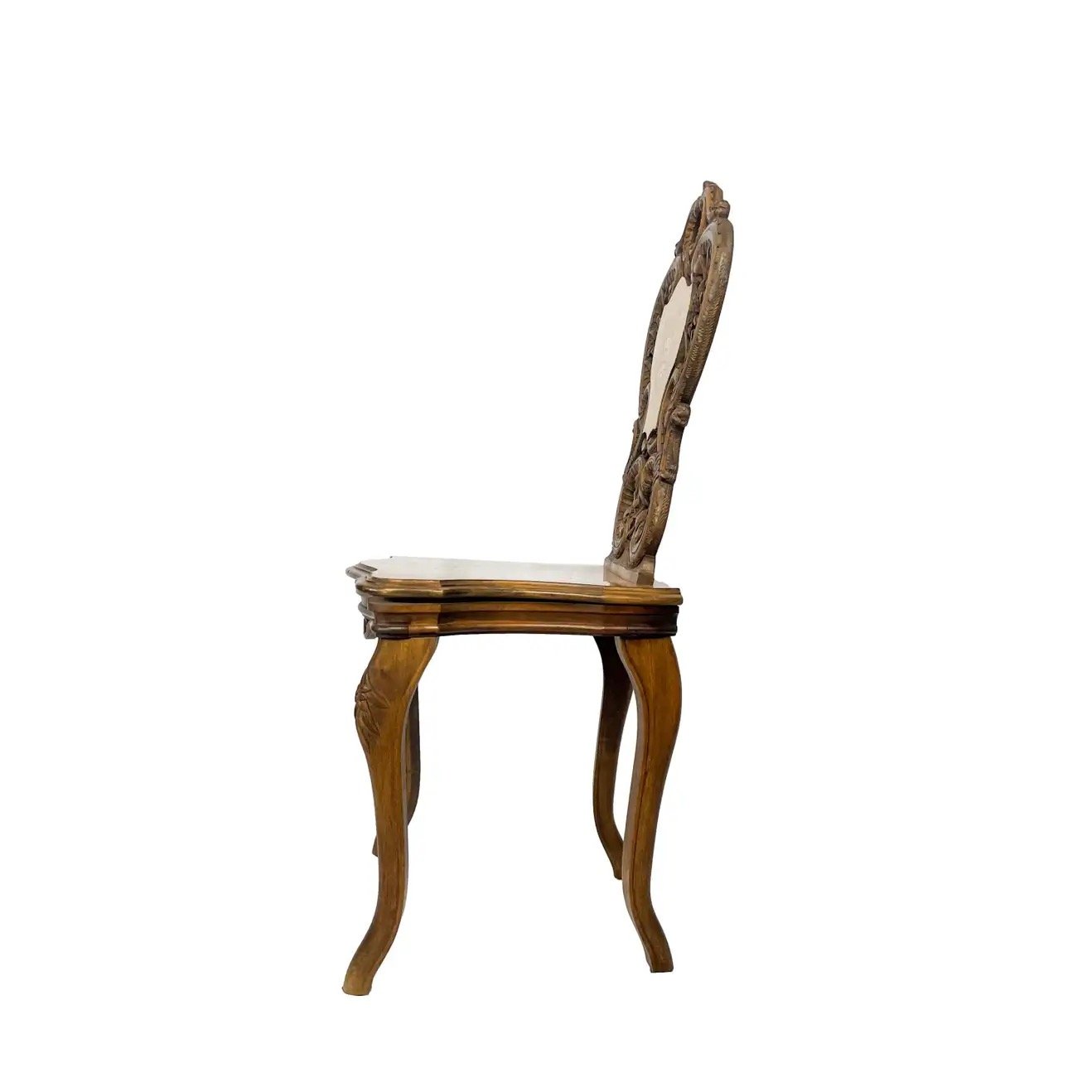 Image 4 of 10
Image 4 of 10

 Image 5 of 10
Image 5 of 10

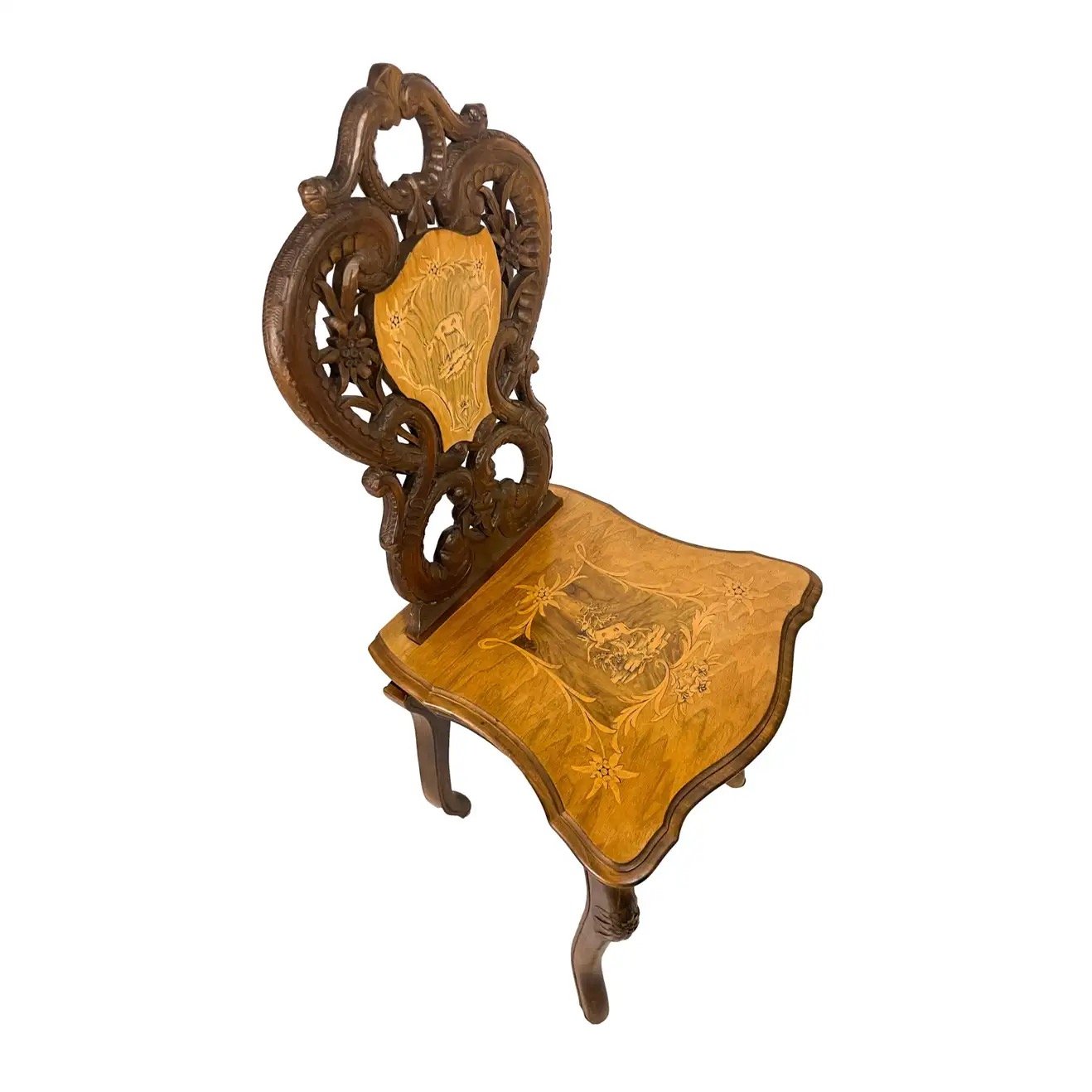 Image 6 of 10
Image 6 of 10

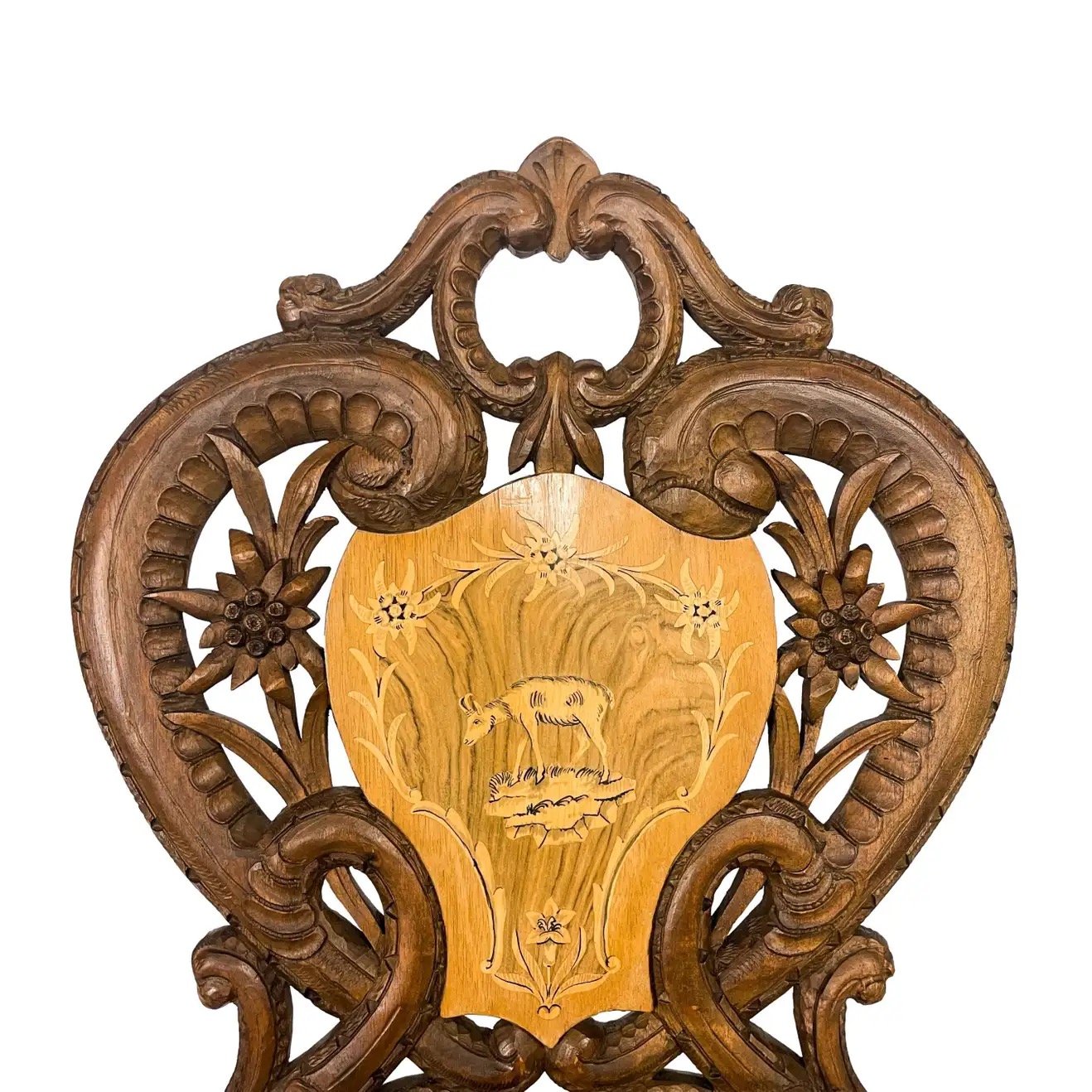 Image 7 of 10
Image 7 of 10

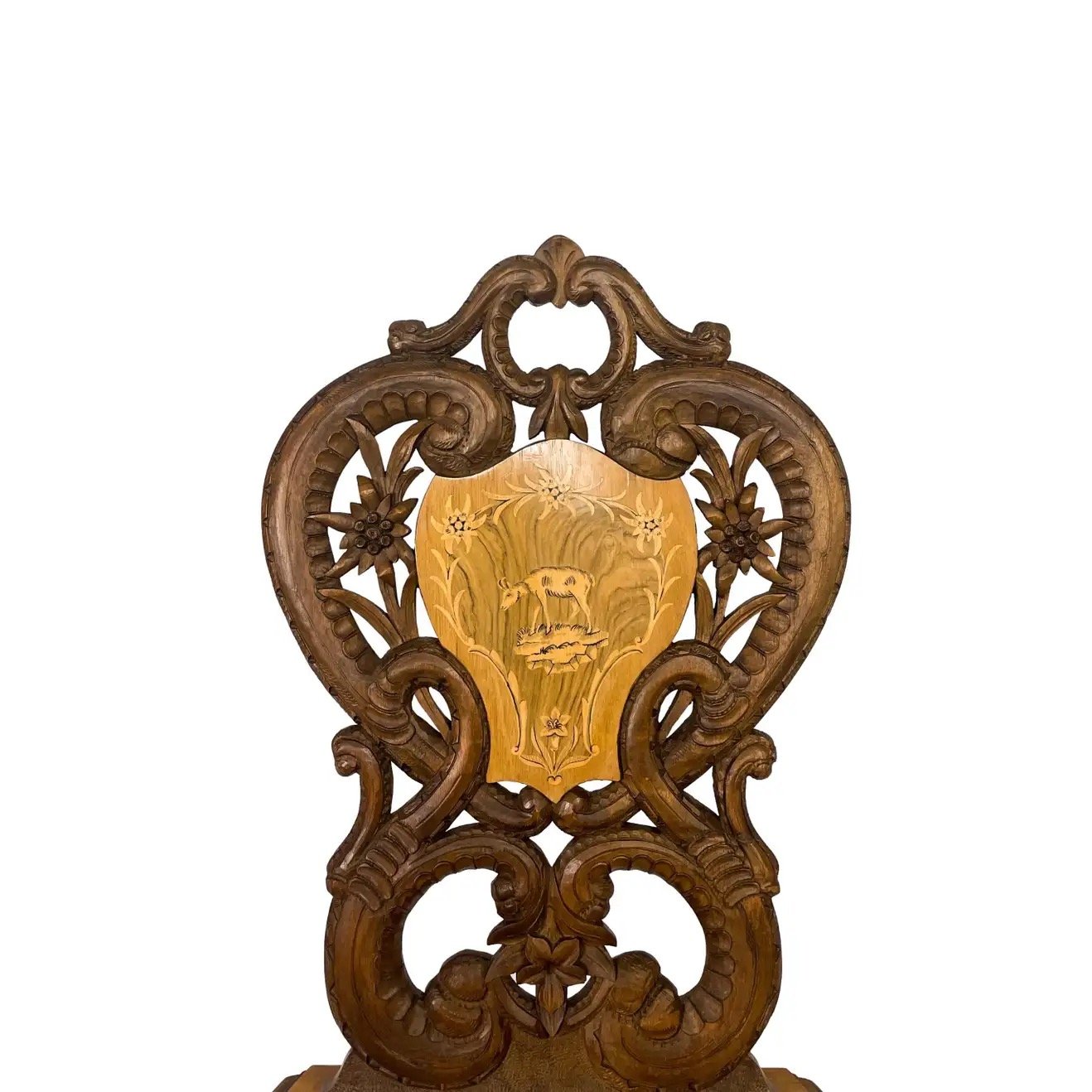 Image 8 of 10
Image 8 of 10

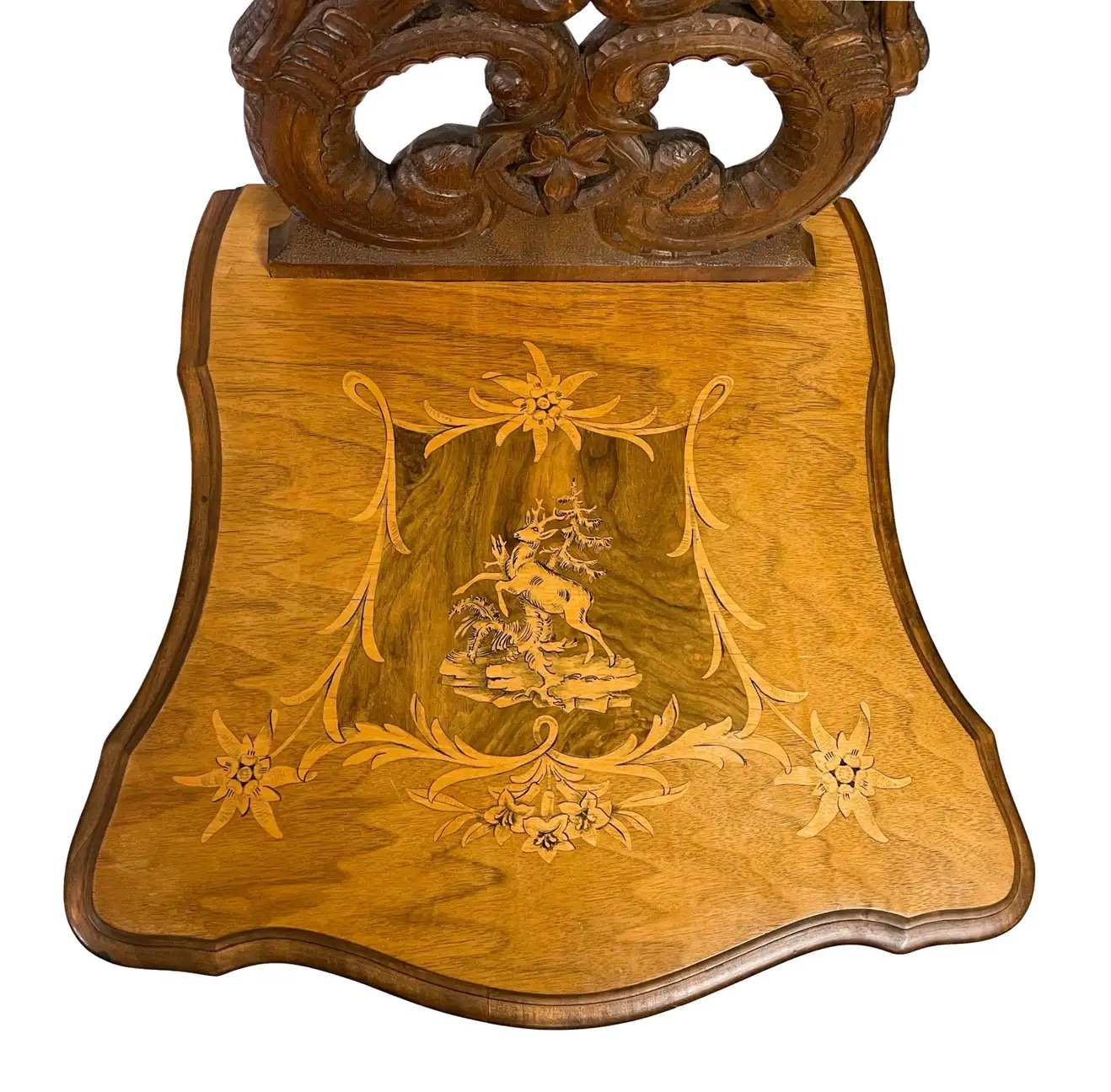 Image 9 of 10
Image 9 of 10

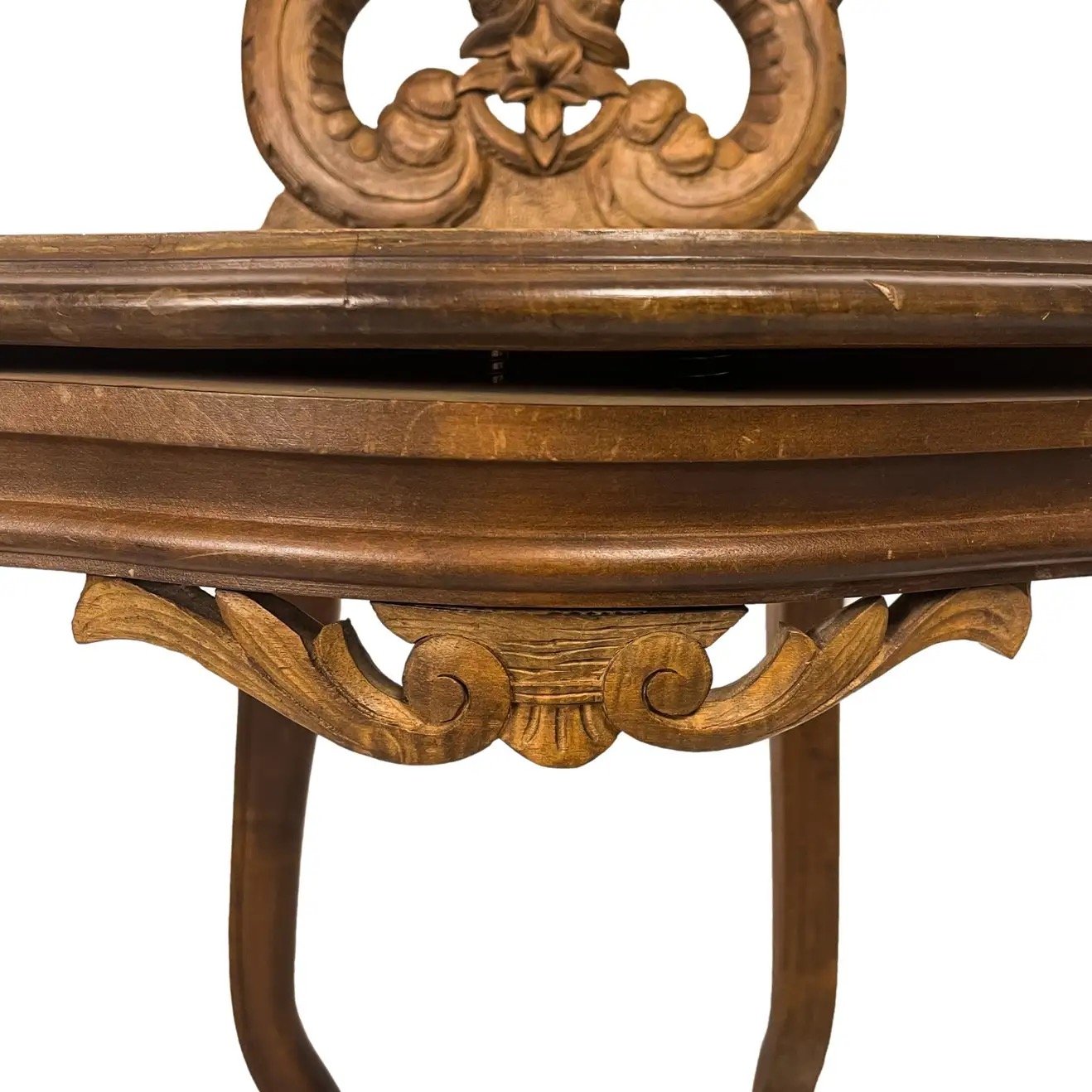 Image 10 of 10
Image 10 of 10

Black Forest Carved & Intricately Inlaid Musical Chair, Swiss, ca. 1900
A Black Forest Carved Walnut Chair, the seat and seatback with intricately inlaid cartouches each depicting an alpine chamois, with carved edelweiss and leaves, with the working music box mechanism under the seat, Brienz, Switzerland, ca. 1900.
Arenski quotes Swiss Poet Heinrich Federer, who said in his memoirs, "Woodcarving brought riches to the village [of Brienz]. It became all the fashion and no Englishman left the Bernese Highlands without having seen the Giessbach, having eaten a fat roasted eel and having bought a Brienz woodcarving." Arenski goes on to say, "Thus, as the tourist industry flourished and thrived, so did the carvers, selling their wares to the well-heeled visitors."
This fashion had been set in motion by Queen Victoria's visit to the area in April 1868, and by her subsequent inspiration to build a Swiss chalet at Osborne House and fill it with Black Forest Swiss carvings (Arenski et al., p. 13-14).
BOOK REFERENCE:
Jay Arenski, Simon and Michael Daniels, SWISS CARVINGS: THE ART of the BLACK FOREST 1820-1940. Easthampton, MA: Antique Collectors Club, 2005, p. 151.
A Black Forest Carved Walnut Chair, the seat and seatback with intricately inlaid cartouches each depicting an alpine chamois, with carved edelweiss and leaves, with the working music box mechanism under the seat, Brienz, Switzerland, ca. 1900.
Arenski quotes Swiss Poet Heinrich Federer, who said in his memoirs, "Woodcarving brought riches to the village [of Brienz]. It became all the fashion and no Englishman left the Bernese Highlands without having seen the Giessbach, having eaten a fat roasted eel and having bought a Brienz woodcarving." Arenski goes on to say, "Thus, as the tourist industry flourished and thrived, so did the carvers, selling their wares to the well-heeled visitors."
This fashion had been set in motion by Queen Victoria's visit to the area in April 1868, and by her subsequent inspiration to build a Swiss chalet at Osborne House and fill it with Black Forest Swiss carvings (Arenski et al., p. 13-14).
BOOK REFERENCE:
Jay Arenski, Simon and Michael Daniels, SWISS CARVINGS: THE ART of the BLACK FOREST 1820-1940. Easthampton, MA: Antique Collectors Club, 2005, p. 151.
A Black Forest Carved Walnut Chair, the seat and seatback with intricately inlaid cartouches each depicting an alpine chamois, with carved edelweiss and leaves, with the working music box mechanism under the seat, Brienz, Switzerland, ca. 1900.
Arenski quotes Swiss Poet Heinrich Federer, who said in his memoirs, "Woodcarving brought riches to the village [of Brienz]. It became all the fashion and no Englishman left the Bernese Highlands without having seen the Giessbach, having eaten a fat roasted eel and having bought a Brienz woodcarving." Arenski goes on to say, "Thus, as the tourist industry flourished and thrived, so did the carvers, selling their wares to the well-heeled visitors."
This fashion had been set in motion by Queen Victoria's visit to the area in April 1868, and by her subsequent inspiration to build a Swiss chalet at Osborne House and fill it with Black Forest Swiss carvings (Arenski et al., p. 13-14).
BOOK REFERENCE:
Jay Arenski, Simon and Michael Daniels, SWISS CARVINGS: THE ART of the BLACK FOREST 1820-1940. Easthampton, MA: Antique Collectors Club, 2005, p. 151.


